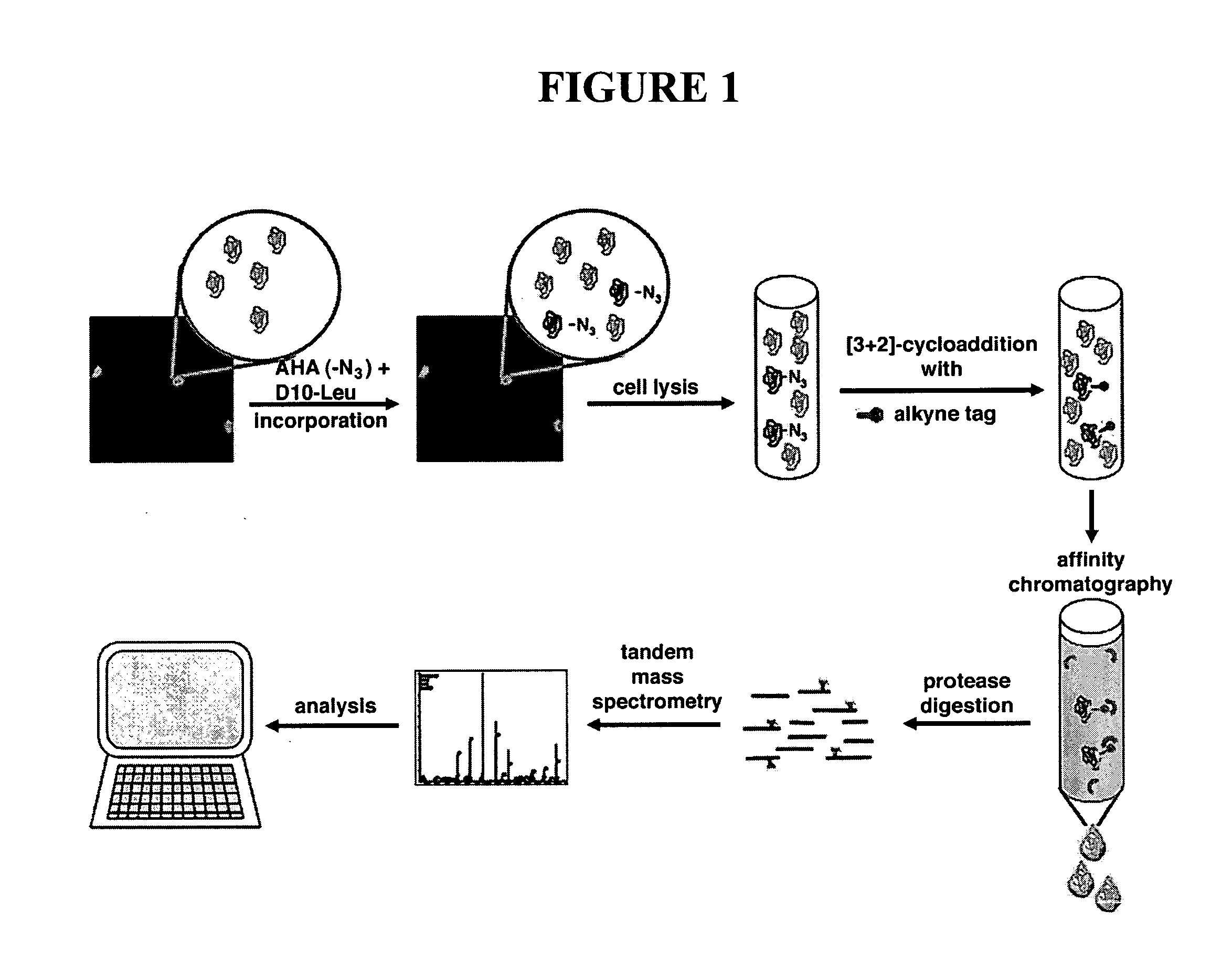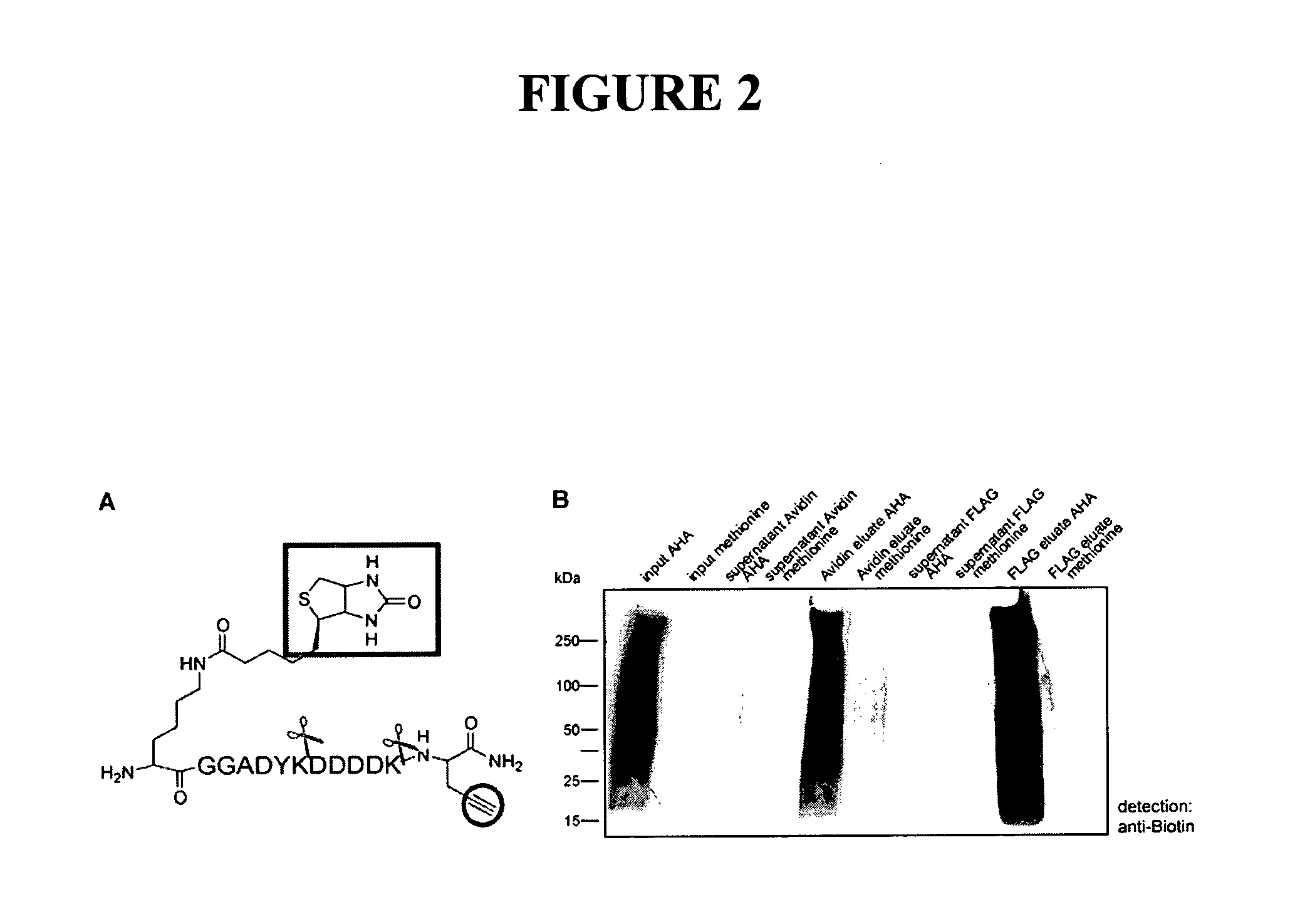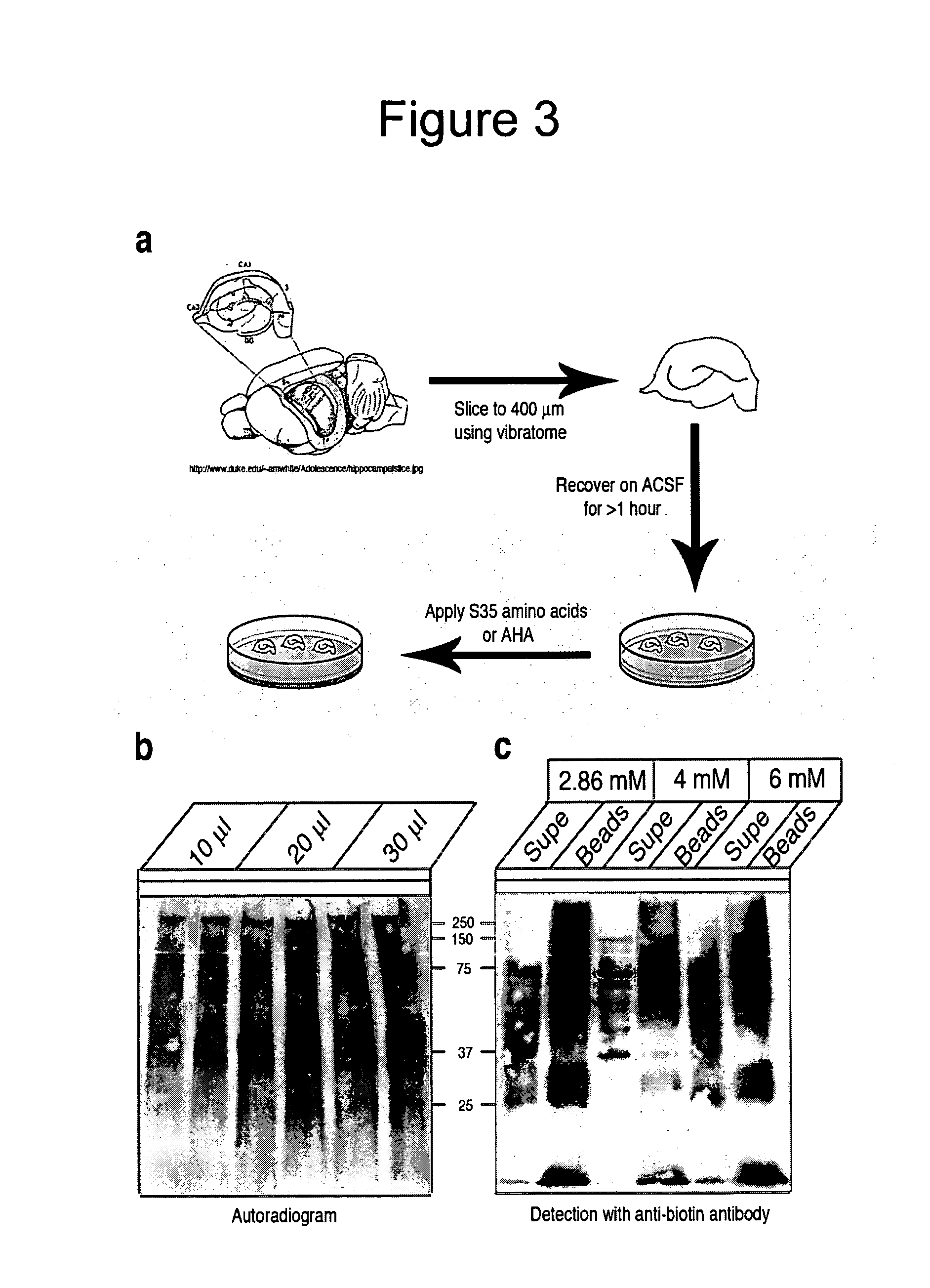Use of non-canonical amino acids as metabolic markers for rapidly-dividing cells
a technology of metabolic markers and amino acids, which is applied in the direction of peptide/protein ingredients, instruments, and therapies, can solve the problems of toxic and potentially fatal side effects, and achieve the effects of facilitating the killing of cancer, detecting labels, and inhibiting the progression of cancer
- Summary
- Abstract
- Description
- Claims
- Application Information
AI Technical Summary
Benefits of technology
Problems solved by technology
Method used
Image
Examples
example 1
Culturing Neurons
[0307]Certain experiments described herein are conducted in neurons. This example provides an illustrative example for culturing neurons and the associated experimental conditions. Other art-recognized methods may also be used for substantially the same purpose.
[0308]Dissociated hippocampal neuron cultures were prepared from newborn rat pups (PO) as outlined in (Banker and Goslin, 1990), Neurons were plated at a density of 15,000-45,000 cells / cm2 onto poly-D-lysine coated cell culture dishes or onto poly-D-lysine and growth factor reduced matrigel (BD Biosciences) coated polycarbonate nets with a pore size of 3 μm (Transwell, Corning) for the preparation of isolated dendrites. The cultures were maintained and allowed to mature in growth medium (Neurobasal-A supplemented with B27 and GlutaMAX-1) for 14 to 21 days before use. The use of this growth medium suppressed glial proliferation, which was even more reduced by application of Ara-C (5 μM final concentration). To...
example 2
[3+2] Cycloaddition Chemistry and Purification of Tagged Proteins
[0309]In embodiments using [3+2] Cycloaddition, the following exemplary protocol may be used. Briefly, AHA, Biotin-PEO-Propargylamide and the triazole ligand were prepared as described previously [3, 46, 47]. The tandem featured alkyne tag was synthesized by GenScript Corporation. Biotin-Cyclooctyne is a generous gift from Carolyn Bertozzi [45]. D10-L-leucine was purchased from Sigma. In all culture experiments, growth medium was removed from HEK293 cells, whole neuronal cultures or isolated dendrites were replaced with HEPES-buffered solution (HBS) [48] with 2.86 mM AHA, and 2.86 mM methionine for control experiments. After incubation at 37° C., 5% CO2, cells were washed with PBS-MC (1 mM MgCl2, 0.1 mM CaCl2 in PBS) to remove excess amounts of AHA and methionine. SNS and other biochemical fractions are incubated with 2.86 mM AHA or 2.86 mM methionine under agitation at 37° C. and washed in StimBuffer after incubation....
example 3
Improved Cu(I) Catalysis
[0310]An aliquot of cells expressing recombinant OmpC (1 mL) was centrifuged at 4° C. and washed once in 1 mL of PBS (pH 7.4). The cells were centrifuged and resuspended in 1 mL of PBS. Triazole ligand 5 was added to a final concentration of 200 μM, and biotin-PEO-propargylamide 6 was added to a final concentration of 50 μM. Addition of the active copper species was accomplished in two different ways. For in situ generation of Cu(I), 100 μM CuSO4 and 200 μM of tris-(carboxyethyl)phosphine (TCEP) were added to the cells. Alternatively, the Cu(I) ion was added directly to the cells in the form of an aqueous suspension of CuBr. Briefly, 10 μL of a 10 mM suspension of CuBr (99.999% purity, Aldrich) was thoroughly agitated and added to the cells. As discussed in the Results section, the quality of the CuBr is critical for the success of the experiment. All labeling reactions were allowed to continue for 16 h at 4° C. and were stopped by washing the cells with PBS....
PUM
| Property | Measurement | Unit |
|---|---|---|
| Fluorescence | aaaaa | aaaaa |
| Cytotoxicity | aaaaa | aaaaa |
| Affinity | aaaaa | aaaaa |
Abstract
Description
Claims
Application Information
 Login to View More
Login to View More - R&D
- Intellectual Property
- Life Sciences
- Materials
- Tech Scout
- Unparalleled Data Quality
- Higher Quality Content
- 60% Fewer Hallucinations
Browse by: Latest US Patents, China's latest patents, Technical Efficacy Thesaurus, Application Domain, Technology Topic, Popular Technical Reports.
© 2025 PatSnap. All rights reserved.Legal|Privacy policy|Modern Slavery Act Transparency Statement|Sitemap|About US| Contact US: help@patsnap.com



